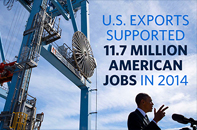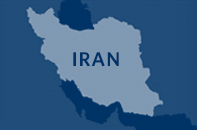Democracy and Progress in India
January 28, 2015
10:33 AM EDT

President Barack Obama and First Lady Michelle Obama view the Republic Day Parade with President Pranab Mukherjee and Prime Minister Narendra Modi from the Rajpath saluting base in New Delhi, India January 26, 2015. (Official White House Photo by Pete Souza)
Sixty-five years ago this week, India's post-independence democratic constitution went into effect, paving the way for the country to become not only a democracy but the world's largest democracy. Today, as a country of well over a billion people encompassing great diversity of ethnicity and economic status and spanning crowded cities and remote villages, India is a paradigm of both the challenges and the successes of building a government that seeks to empower all its people.
This week, as I travel to India with President Obama on the occasion of Republic Day, I am heartened to see an extensive portfolio of projects that OPIC has supported with financing and political risk insurance to advance development in India in sectors from power generation to technology to small business finance. As the U.S. Government’s development finance institution, OPIC has invested nearly $2.7 billion across 148 development projects in India since 1974. Over the past five years, our portfolio in India has increased more than five-fold to $734.3 million.
This large and growing portfolio underscores what I see all over the world: that while a stable, democratic government can help foster the conditions that make development possible, government cannot on its own perform all the challenging and costly work of ensuring its people have sufficient access to housing and healthcare and education, water to drink and electricity to power their homes and places of work.
Much of OPIC’s recent work in India with our private sector partners has been aimed at the country’s extensive rural population that lives without some of the essentials of modern life, like clean drinking water, access to financial services, or basic lighting to enable their children to study or keep their shops open after dark.
For example, we recently agreed to provide a loan to a company that provides pay-as-you-go solar kits to rural villagers, so they can light, and in some cases cool their homes and small businesses using an innovative technology that is both affordable and easy to use. The founder of that company, Simpa Networks, captured just how much this simple technology can transform life in remote communities when he said that it provides not just a few more hours of light, but a few more hours of life: more time for people to work, play, converse … and live fully.
OPIC’s success advancing development in India is a reflection of the strength of our private-sector partners, which have developed innovative solutions that address the specific challenges of this expansive country and its massive rural population. Azure Power used OPIC financing to build the first independent solar power producer in the country. An OPIC loan helped QuantumID Technologies introduce a cargo-tracking technology that’s improving the efficiency of local airlines and cargo industries. And, because one of the key ways to advance development is helping people start and grow their businesses, OPIC has partnered with multiple microfinance institutions to provide small loans to entrepreneurs and small businesses.
These projects are improving the way people live and work across the country and they underscore what successful partnerships between business and government can accomplish. I am excited about the future prospects for India, and I look forward to continuing to work to continue to support investment that will make a positive impact in the country.





